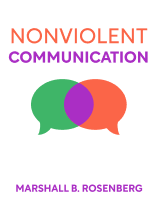

This article is an excerpt from the Shortform book guide to "Nonviolent Communication" by Marshall B. Rosenberg. Shortform has the world's best summaries and analyses of books you should be reading.
Like this article? Sign up for a free trial here .
What is reflective listening? How does it differ from the way we normally listen in conversation?
Reflective listening is different from a typical conversation, where it’s easy to drift into mentally preparing a response or coming up with solutions while the other person is talking. Listening reflectively requires that you resist the temptation to argue, give advice, or try to “fix” the situation.
Read about reflective listening and how to apply it in conversation.
Barriers to Reflective Listening
Most of us are never explicitly taught how to listen with empathy. Reflective listening is hard, even with people we love, because modern culture encourages quick fixes and constant striving rather than empathy and stillness. Allowing someone to feel the full extent of their feelings without offering advice or reassurance requires staying present with someone else’s pain without flinching.
On the other end of the spectrum, listening empathically to people you have strong disagreements with can be equally difficult. In that case, empathic listening might require you to listen to hurtful words, accusations, or hatred without being provoked into anger and judgment. Maintaining a focus on hearing someone’s feelings and needs underneath layers of insults or bigotry might stretch your capacity for empathy to the breaking point—which is exactly when you need it most.
Rather than connect empathically with someone, we often turn to easier options. Here are some common mistakes people make when responding to someone expressing their feelings and needs.
| Tactic | Example |
| Consoling | “It’s okay, you tried your best.” |
| Advising | “If it were me, I would…” |
| One-upping | “That’s not so bad, I’ve been through way worse.” |
| Storytelling | “That reminds me of when my aunt went through the same thing…” |
| Shutting down | “Cheer up! It’ll all work out.” |
| Sympathizing | “I’m so sorry. You poor thing.” |
| Interrogating | “How did it happen?” |
| Explaining | “I was only late because of traffic.” |
| Correcting | “Are you sure that’s what he said?” |
| Educating | “You can learn a lot from this experience.” |
All of these tactics involve engaging with someone intellectually, turning them into a project rather than a person. Even mental health professionals often make the mistake of responding to someone’s pain with analysis rather than empathy.

———End of Preview———
Like what you just read? Read the rest of the world's best book summary and analysis of Marshall B. Rosenberg's "Nonviolent Communication" at Shortform .
Here's what you'll find in our full Nonviolent Communication summary :
- How nonviolent communication lets you have more compassion for yourself
- Why nonviolent communication is the key to fostering authentic connections with others
- The 4 steps to expressing yourself with empathy towards others






